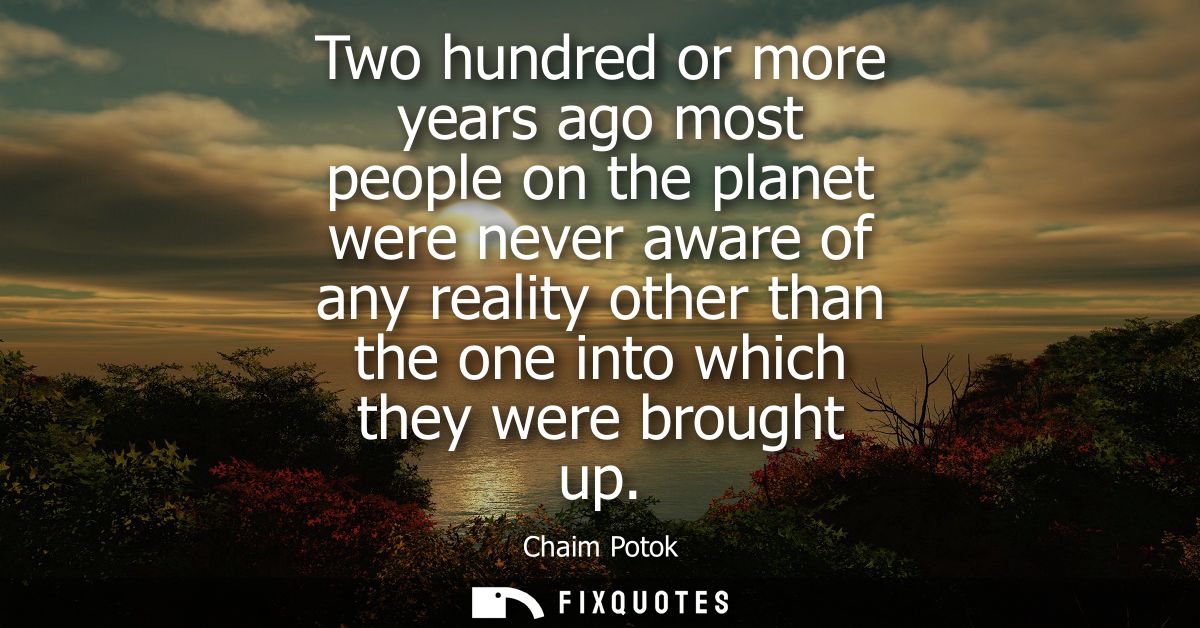"Two hundred or more years ago most people on the planet were never aware of any reality other than the one into which they were brought up"
About this Quote
Chaim Potok’s observation recalls a time when the boundaries of one’s world were defined almost entirely by birth, geography, and tradition. Centuries ago, the overwhelming majority of people never traveled far from where they were born. Their customs, beliefs, social norms, and even languages were inherited from their immediate surroundings, reinforced generation after generation. Without rapid transit, mass communication, or the internet, encounters with drastically different ways of living were exceedingly rare. The world was fencelike, each culture tightly enclosed by practical and ideological borders.
Most individuals inherited not only their physical location but also their very sense of reality, the assumptions they held about the world, the nature of truth, morality, family, and purpose. These frameworks were often regarded as absolute or divinely ordained, unchallenged by comparison to alternatives. The possibility that there could be other, equally valid worldviews rarely presented itself. For many, the surrounding consensus was so complete and undisturbed that it simply merged with “what is,” forming a seamless tapestry of reality that was never seriously questioned.
The transmission of knowledge and worldview was largely oral and experiential. Children learned from parents, elders, and local leaders, drawing almost exclusively from the pool of wisdom available within the boundaries of their own community. Very few people had the resources to travel far or to access texts and scholarship from distant cultures. The existence of other worldviews might have been whispered by traveling traders or recounted in myths, but these were often seen as curiosities, stories rather than plausible alternatives.
Potok’s insight exposes how unprecedented our current historical moment is. Today, most people are regularly exposed to alternative realities, customs, and belief systems through travel, global migration, education, media, and digital technology. The recognition of multiple realities has become commonplace, but in the not-so-distant past, the average person lived their whole life in a single, unbroken cultural reality, unable to imagine, let alone encounter, fundamentally different possibilities.
More details
About the Author

